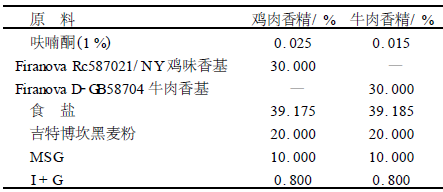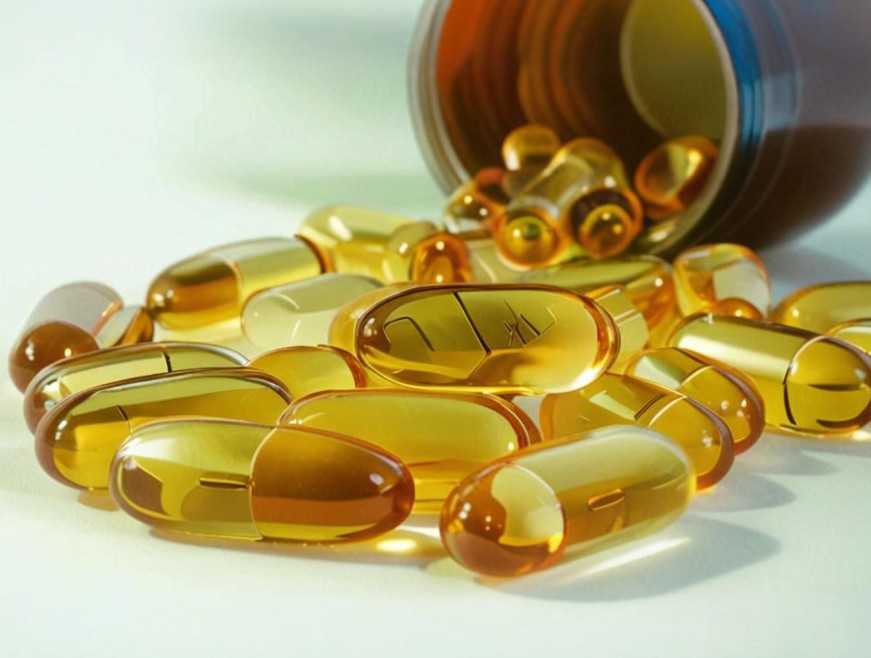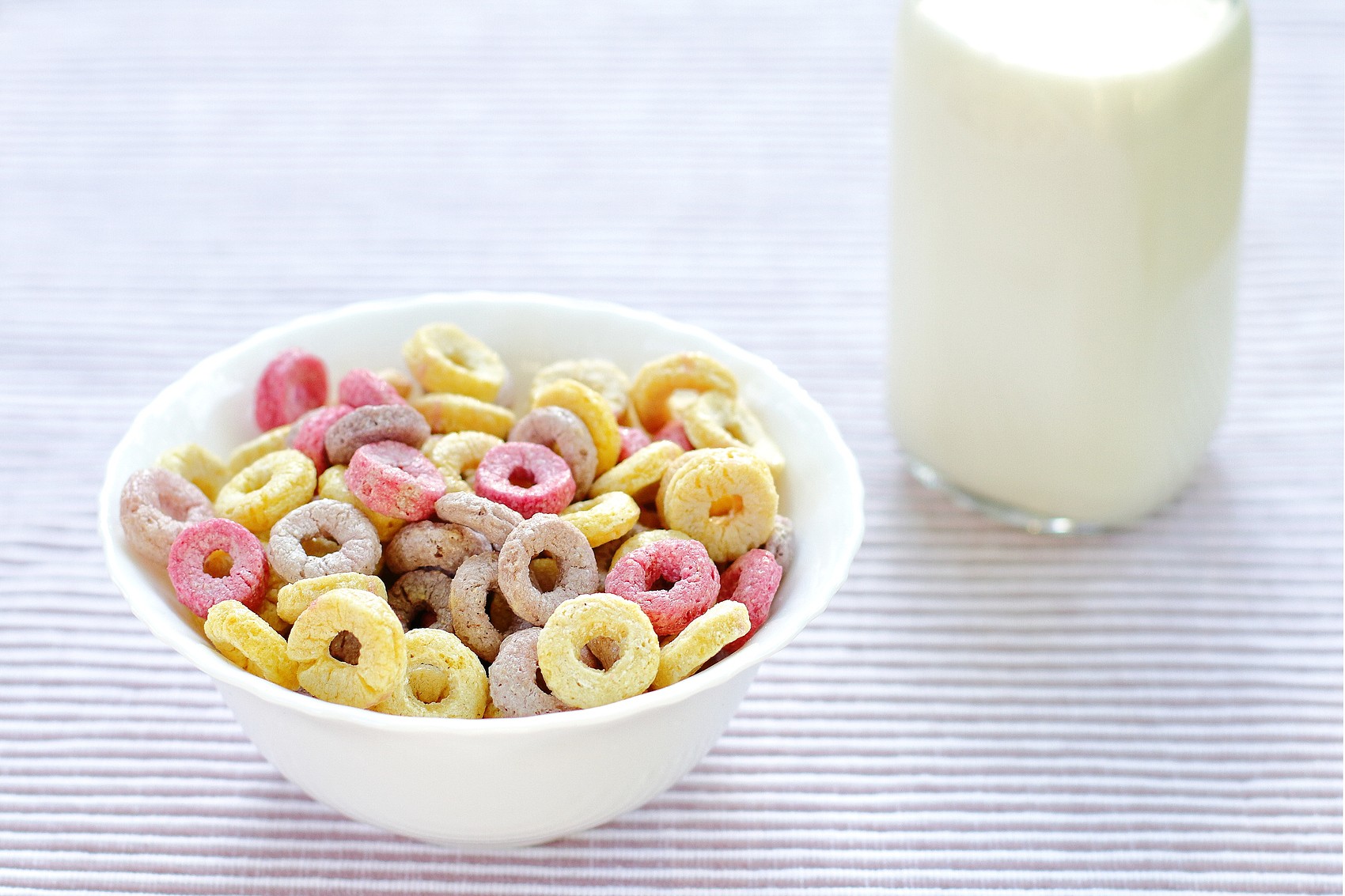Characteristics of meat aroma enhancer
Flavor Enhancer, also known as flavor enhancer, refers to substances that can significantly enhance or improve the original flavor of food. In the flavor and fragrance industry, in order to adjust the aroma needs, often add flavoring agents to enhance the intensity of the flavor, reduce the cost, and make the aroma more coordinated, rich, soft and realistic. Food flavor is usually divided into sweet flavor (such as strawberry, apple, peach, etc.) and salty flavor (such as spicy flavor, meat flavor), meat flavor is an important part of the food flavor industry, meat flavor enhancer can be divided into the following 6 categories:
1) Food flavor monomer (Chemical) : maltol, ethyl maltol, furfuryl mercaptan, furfuryl mercaptan, 2-mercapto-3-furan mercaptan, bis (2-methyl-3-furan) disulfide, methyl cyclopentenolone (MCP), etc.;
2) Umami agents: Sodium glutamate (MSG), sodium inosine (IMP), sodium guanylate (GMP), sodium inosine + sodium guanylate (I+ G), monosodium succinate (MSS), disodium succinate (DSS), etc.;
3) Natural essential oils and their blended flavors: such as sesame oil, sesame flavor and some spices essential oils, resins or blended flavors;
4) Odorants generated in the Maillard reaction: such as aldehydes or ketones and cysteine generated in the reaction of very small amounts of hydrogen sulfide;
5) Other natural flavors and spices: such as adding a small amount of pork and chicken flavor to beef flavor, and adding a small amount of chicken and beef flavor to pork flavor.
Meat flavor enhancer has the following characteristics:
1) The amount is small, the aroma enhancement effect is significant;
2) Aroma enhancer itself may not present aroma, nor will it change the structure and composition of other aroma substances, but it can change human physiological functions, that is, strengthen the stimulation of human olfactory nerves, improve and improve the sensitivity of olfactory cells, and strengthen the transmission of aroma information;
3) Reduce the amount of other aromatic substances or reduce the final amount of flavor by significantly enhancing the aroma, thus reducing the cost;
4) Some flavoring agents not only have the effect of flavoring, but also have a good aroma effect, which can make the fragrance coordinated, soft, rich, and long fragrance retention time;
5) Some flavor enhancers have special molecular structure, and can react with other substances in the processing process to produce other aroma substances, such as furanone, MCP, etc.;
6) The amount of flavoring agent has an effect on the aroma. Some flavoring agents will not affect the overall aroma of the flavor when used in large quantities, such as maltol, ethyl maltol, etc., while some spices will present unpleasant odor when used in excess, such as furfuryl mercaptan, MCP, etc.;
7) Because of the synergistic effect between aroma enhancers, they are often used together.
The introduction of various meat flavor enhancers
A, edible flavor monomer class
(a) Maltol and ethyl maltol are both broad spectrum flavoring agents, in the GC/ MS analysis of some meat flavors found that a considerable part of the meat flavor added malt or ethyl maltol, the added amount of 1% to 20% (here refers to the quality ratio of spices in the flavor, excluding solvents). Maltol (Maltol, Veltol), the trade name of flavol, Palatone, Kopalin, chemical name 2-methylpyromeconic acid, has a special aroma similar to burnt cream sugar, also described as caramel aroma, volatile, sublimed at 93 ℃, Natural products are found in stir-fried malt, pine needles, chicory. Ethy Maltol (Vetol2plus), chemically known as 2-ethyl pyromeconic acid, has a long-lasting caramel and fruity aroma, with a very sweet taste and a sweet fruity aroma in a thin solution. Both are soluble in water, ethanol and propylene glycol (PG) should pay attention to the following 4 points when using: 1) Both contain phenol hydroxyl, and contact with iron containers will be red, so avoid using iron containers; 2) Under acidic conditions, the aroma enhancement effect is good, but under alkaline conditions, the effect is reduced due to the dissociation of phenol hydroxyl group; 3) The aroma enhancement effect of ethyl maltol is about 3-8 times that of maltol, and the dosage can be reduced when using the former; 4) If used with I + G, MSG, MCP and other flavoring agents, it can enhance the effect.
(b) MCPMCP, also known as 3-methyl-1, 2-cyclopentenedione or 3-methyl-2-hydroxy-2-cyclopentene-1-one, is a white or light yellow crystalline powder with maple and acerlike aroma, which is also described as caramel aroma. Its presence was detected in some meat flavors. MCP has similar flavoring properties to maltol and ethyl maltol, but the dosage should not be too much. Under high temperature heating conditions, MCP will also open the ring and react with other aroma substances to produce a unique meat flavor.
(3) Furfuryl Mercaptan, also known as coffee mercaptan, 2-furanyl methylmercaptan. In high concentrations, it has a very unpleasant sulfur odor, and when diluted, it smells of coffee and meat. The 1% furfuryl mercaptan products produced by some large companies have a strong flavor of meat, roast meat (also like beef), and do not have a coffee flavor. The GC/ MS analysis of some meat flavors detected the presence of furfuryl mercaptan in trace amounts, and many papers also affirmed the role of furfuryl mercaptan and suggested the addition of trace amounts. In actual use, the furfuryl mercaptan is diluted into 1% mass fraction and then added to meat flavor in a small amount.
(4) Furaneol; Furanone) chemical name 2, 5-dimethyl-4-hydroxy-3 (2H) -furanone, is a food flavor, flavor enhancer, synergist. As early as the 1960s, it was found in fresh pineapple and beef soup, so it is also called bromelain. Furanone has a natural pineapple, strawberry like aroma, also described as burnt sweet aroma, with obvious aroma, sweetening effect, can make the fragrance more round and plump, and has the function of shielding and covering up unpleasant taste. One part of furanone is equivalent to 5.5 to 6 parts of ethyl maltol and 16 to 20 parts of maltol in enhancing aroma and shielding unpleasant odors. In the GC/ MS analysis of some meat flavors, the presence of furanone was detected, and its proportion could be as high as 5% of the flavor proportion. On the other hand, furanone is also a flavor precursor compound of meat flavor, which can react with cysteine, cystine, ammonium sulfide and other substances to produce meat flavor substances, and produce a very small amount of hydrogen sulfide. According to Ding Desheng's research, adding furanone to chicken essence can obviously increase the fullness and balance of the flavor and enhance the barbecue flavor. Adding furanone to beef essence can enhance flavor and flavor significantly, and the smoothness and flavoriness of flavor are significantly increased, which makes the meat taste more plump, juicy and juicy. Examples of applications of furanone, (I + G) and MSG are shown in Table 1.

(5) Other flavor monomers with significant aroma enhancing and modulating effects are: 2-methyl-3-furan mercaptan, bis (2-methyl-3-furan) disulfide, 2-methyl-3-methyl-mercaptan, 2-methyl-3-tetrahydrofuran mercaptan, etc. These flavoring agents have the flavor of meat and roast meat, but because of the high cost, they can only be used in very small amounts.
Two, umami agent class
(a) MSGMSG is MSG, also known as L-glutamate sodium, sodium glutamate. MSG is basically odorless, with umami, sweet and salty flavors, and the taste threshold is 0.014%. MSG acts on the front end of the tongue and the two jaws, and has a strong sense of direct impact of umami and preconsciousness. Umami is relatively monotonous, and the effect of umami is reflected in the middle sense, and the umami comes quickly and goes quickly.
MSG has synergistic effect with IMP, GMP and (I + G). (MSG + IMP) At 0.05 g/ L mass concentration, when MSG∶IMP = 1∶1, umami reached the maximum intensity; In the mixture of MSG and IMP, the mass fraction of IMP increased from zero to 50%, and the intensity of umami increased in a convex parabolic shape. The mass fraction of IMP increased from 50% to 100%, and the intensity of umami decreased in a convex parabolic shape.
MSG is often mixed with (I + G) to produce strong MSG, 99% MSG+ 1% (I + G) can be increased by 2 times, 98% MSG+ 2% (I + G) can be increased by 3.5 times; 96% MSG+ 4% (I + G) can be increased by a factor of 5. In the application of meat flavor, MSG is often used in combination with (I + G), and the specific application is shown in Table 1.
(2) IMP, GMP and (I + G) IMP and GMP exist in large quantities in livestock and poultry products such as beef, pork and chicken, and seafood such as sardines, eels, white spotted pike and fragrant fish. IMP and GMP have a strong umami flavor, and the umami intensity of GMP is about 3 times more than that of IMP, and a mixture of the two is usually used commercially (i.e., I + G, IMP and GMP account for 50% each). MSG, IMP, GMP, (I + G) can make the meat flavor more intense, perfect, enhance and improve the meat flavor, persistence and strong sense.
(3) MSS and DSSMSS, DSS both have umami and special shellfish taste, so it is also known commercially as scallops, shellfish (such as clam meat, oysters, snails, scallops, abalone, clams, etc.) umami main components, can be used as seafood flavor enhancer. Both have synergistic effect with MSG.
3.Natural essential oil or its blended essence
The most commonly used essential oil is sesame oil. Unroasted sesame has very few aroma components, only containing more than 10 kinds of aldehydes (such as valeraldehyde, hexal, heptanaldehyde, furfural, 5-methylfurfural, etc.), several phenols (phenol, guaiacol, etc.) and more than 10 kinds of other aroma substances. However, after roasting sesame, its aroma components and quantity are greatly increased. Including hydrocarbons, alcohols, aldehydes, ketones, acids, furans, phenols, lactones, pyrazines, pyrroles, pyridines, oxazoles, nitriles, thiazoles, thiophenes, mercaptans and sulfides and other 17 categories of 208 aroma substances. The Sesame oil extracted from Roast-ed sesame has strong aroma and good aroma enhancement. If you want to add sesame oil to the water flavor, it is necessary to emulsify the sesame oil first, otherwise the phenomenon of fat floating will occur after adding, affecting the appearance and quality of the flavor. In some commercially available blended oil or salad oil, sesame oil is often added to enhance the flavor, improving the added value of the product. In addition to the use of natural sesame oil, sesame oil flavor can also be used. When the aroma of natural sesame oil is not strong enough or the quality is unstable, it can be solved by fragrant way.
Fourth, Maillard reaction to produce flavor enhancers
This kind of reaction has been reported in many studies, for example: 1) VB1 → bis (2-methyl-3-furanyl) disulfide; 2) α-hydroxyl ketone + (NH4) 2S →H2S, etc.; 3) Aldehyde + (NH4) 2S →H2S, etc.; 4) Furanones and their structural analogues + (NH4) 2S →H2S, etc.
In order to reduce the cost of meat flavor and improve its strength, fullness and coordination, it is necessary to add meat flavor enhancer. However, not every flavor enhancer can be applied to meat flavor, in general, MSG, (I + G), furanone, maltol and ethyl maltol are suitable for a variety of meat flavor, MSS, DSS for seafood flavor, sesame oil is suitable for pork, beef, ham, roast and other types of flavor.










